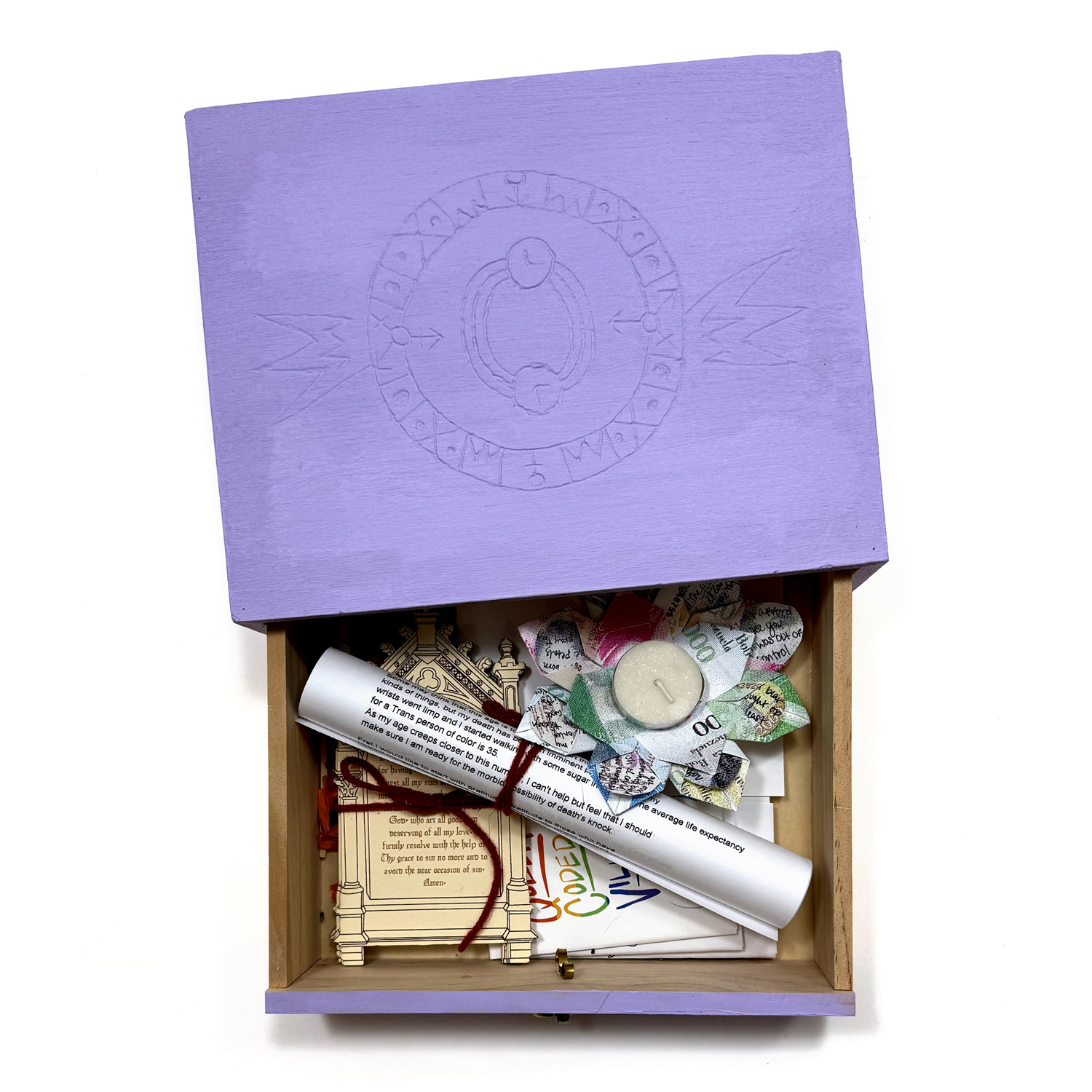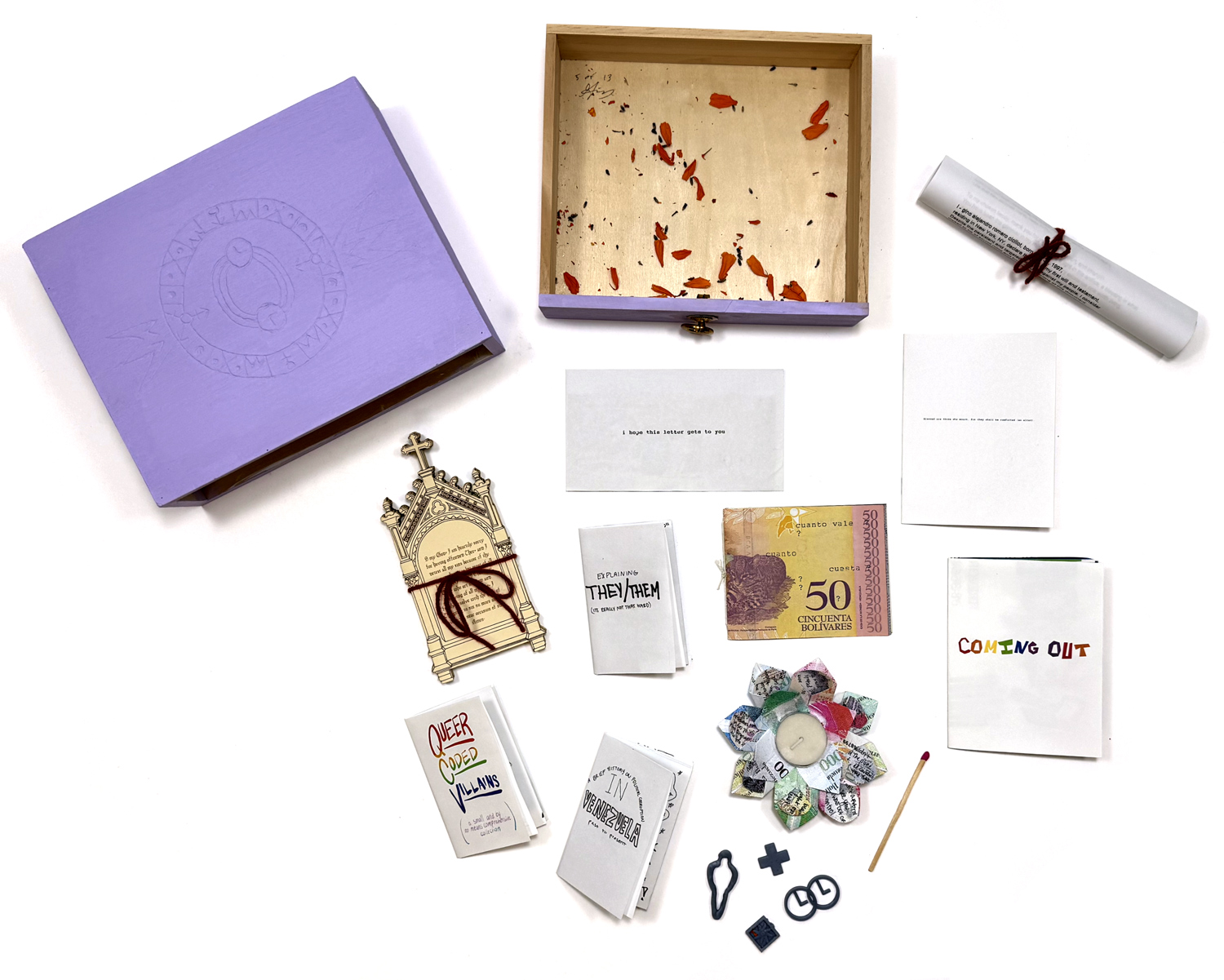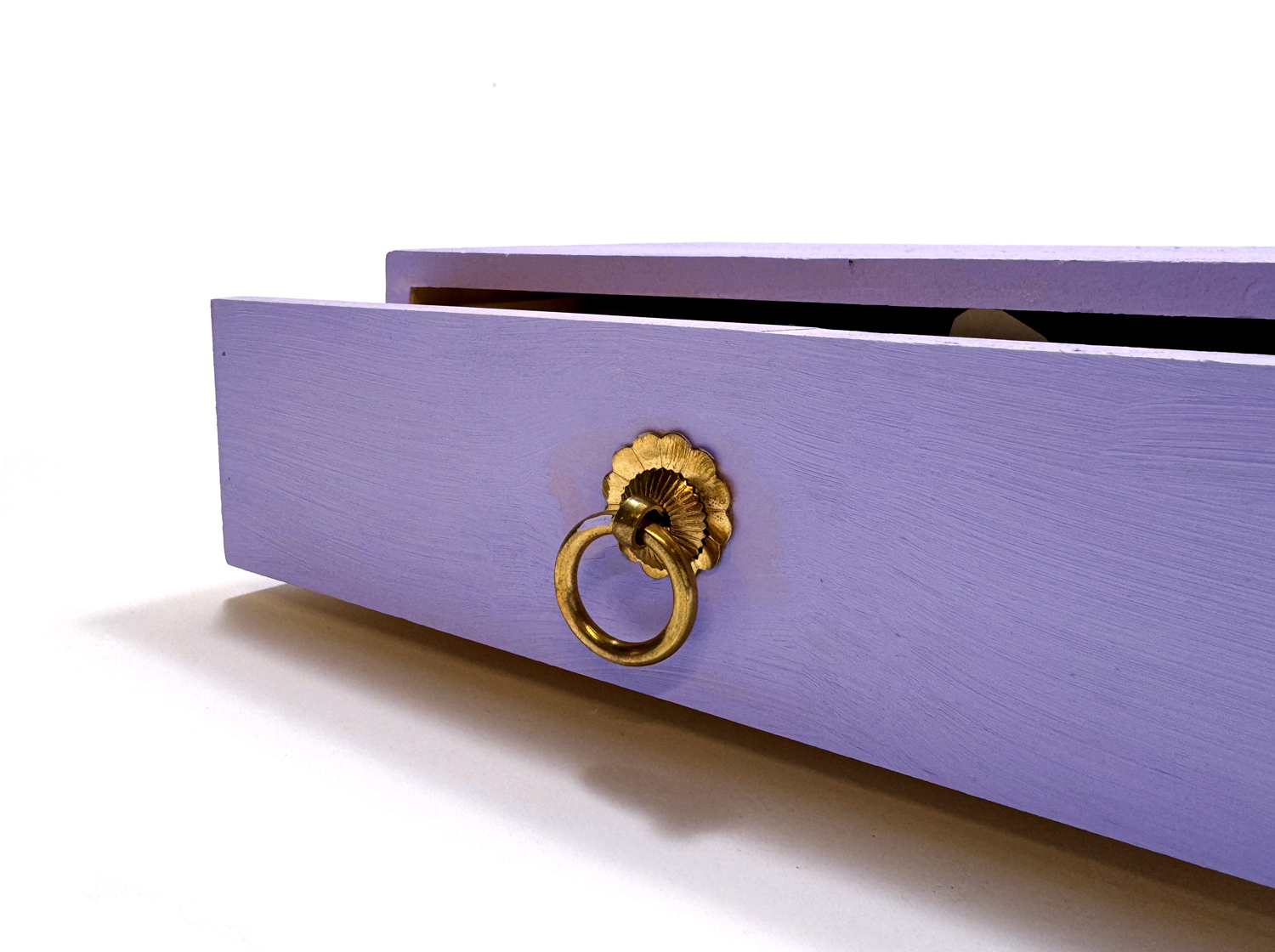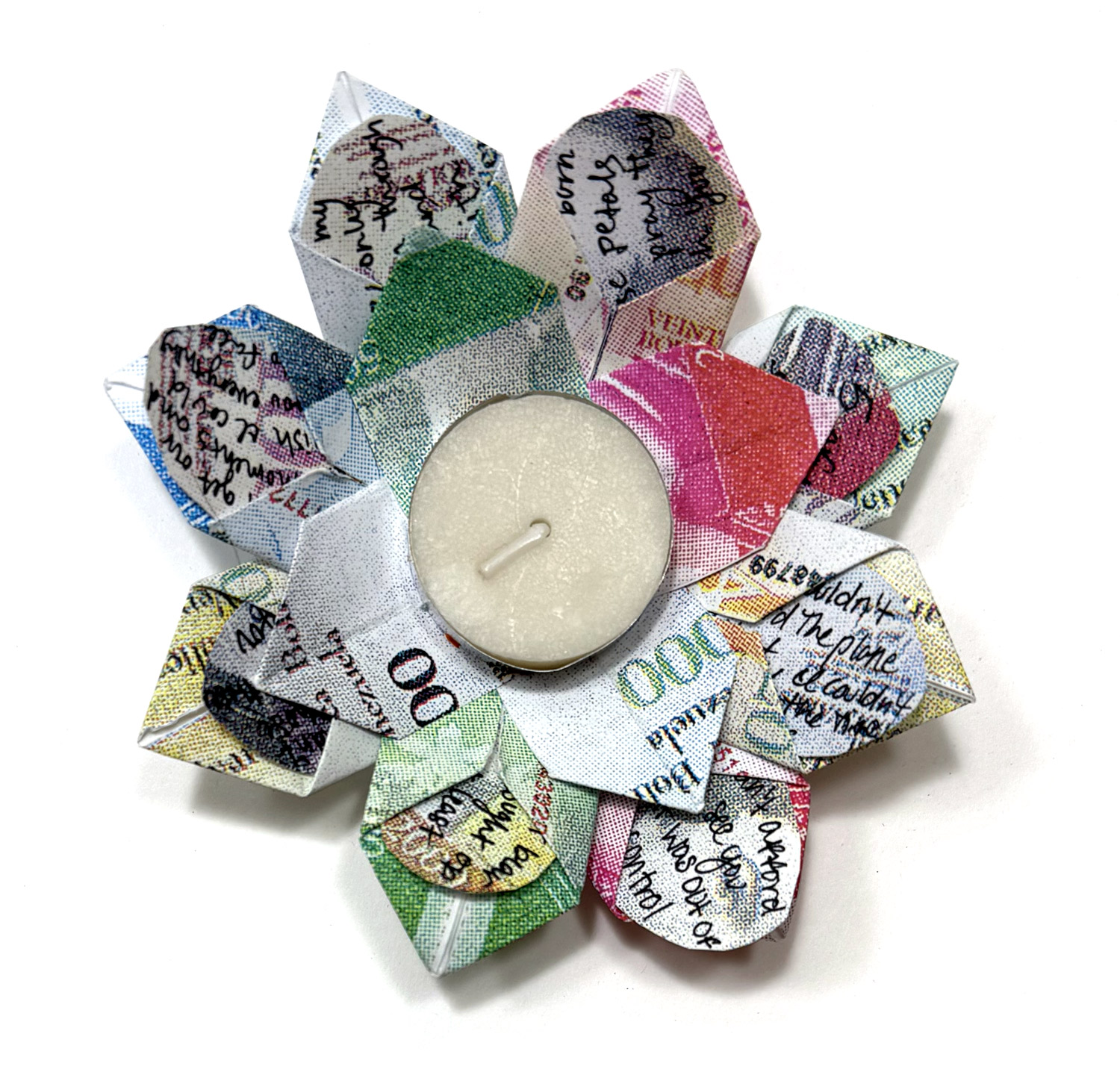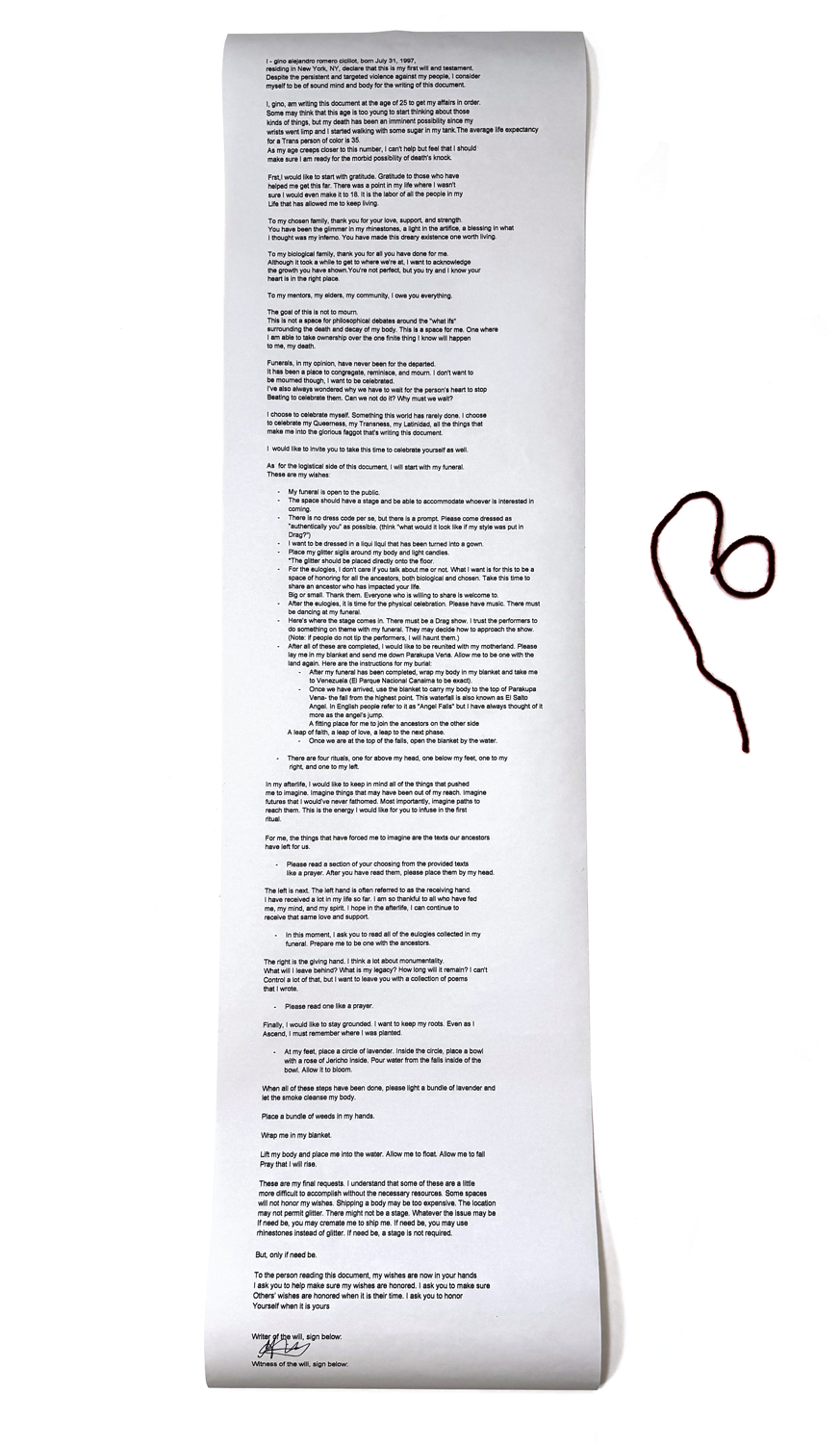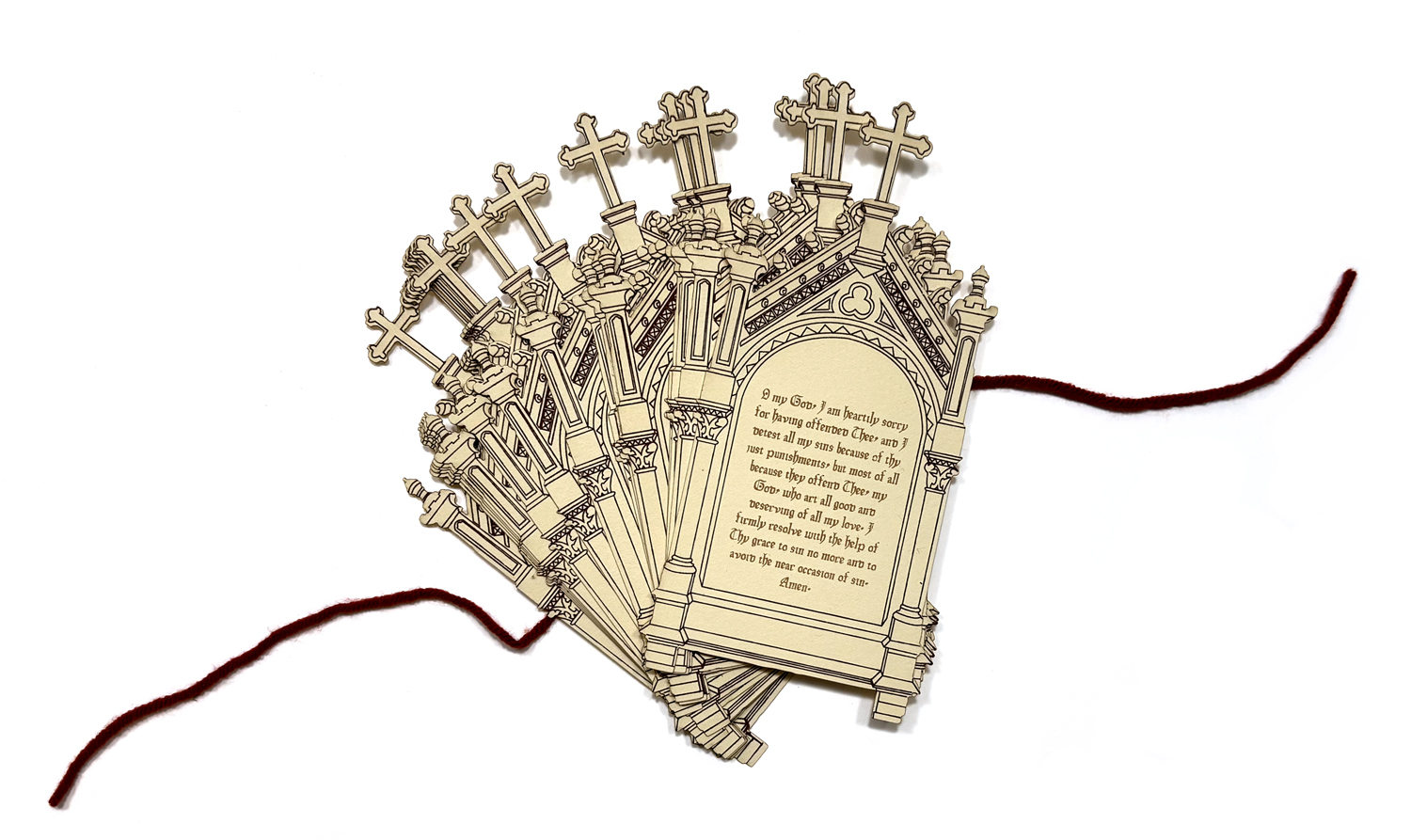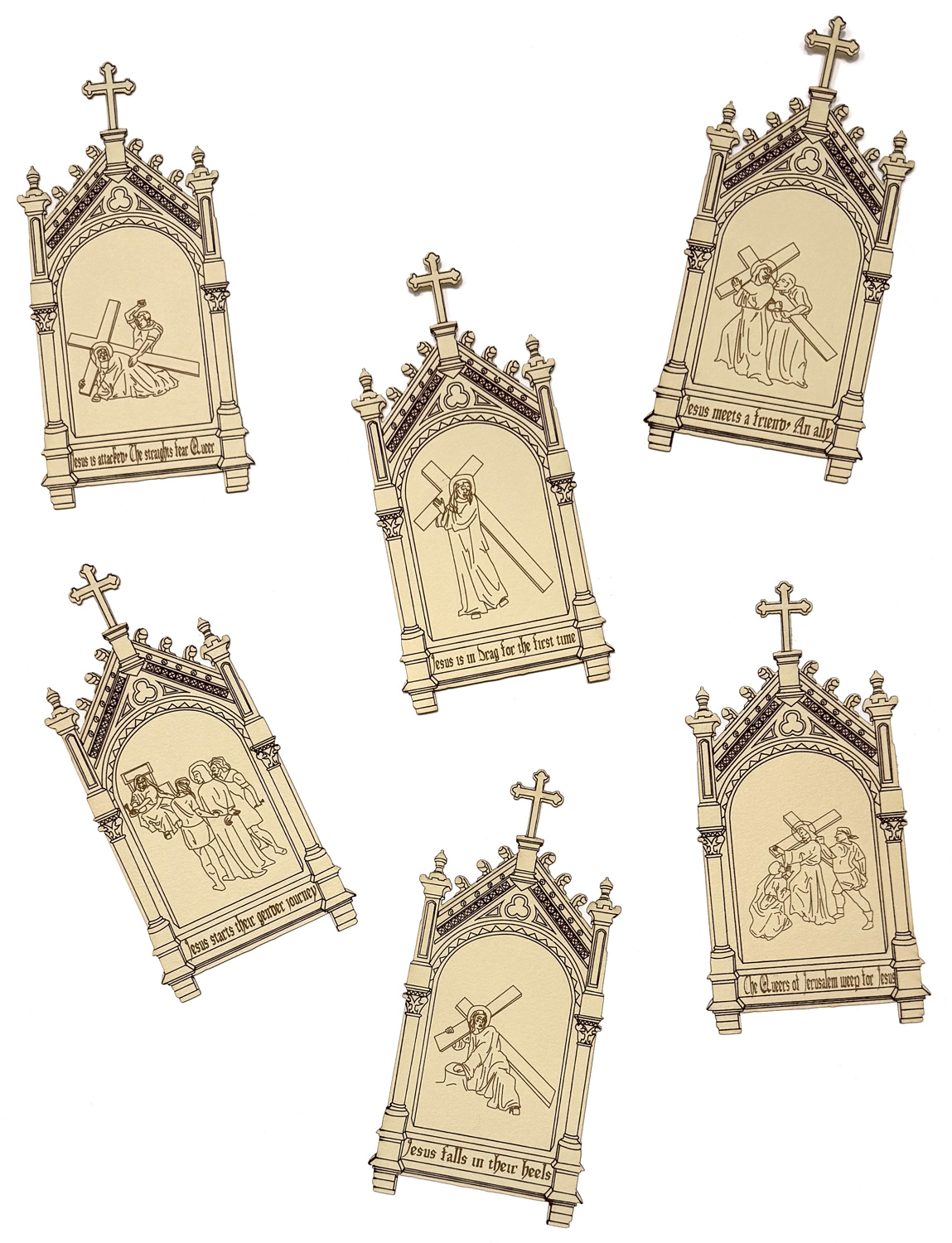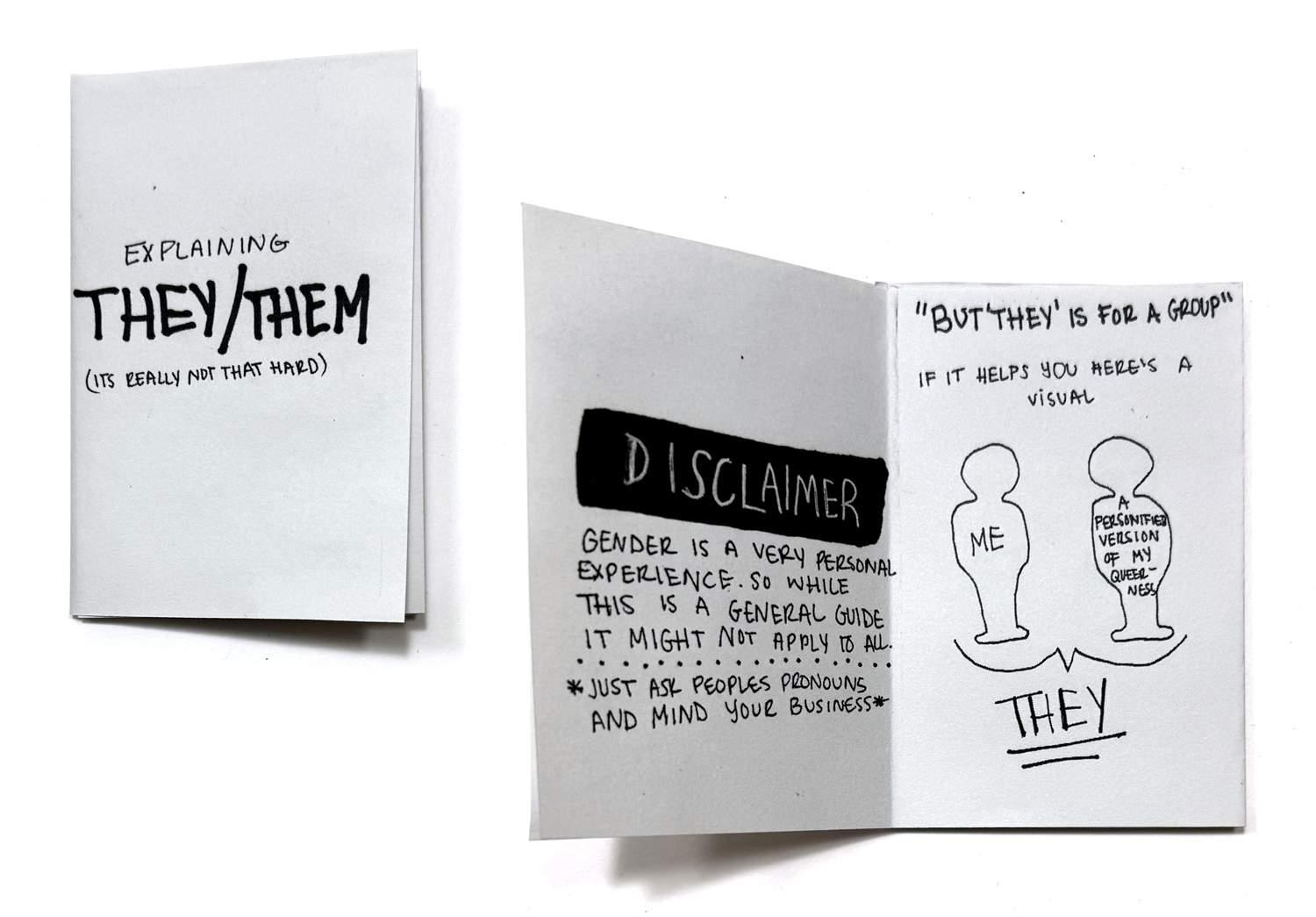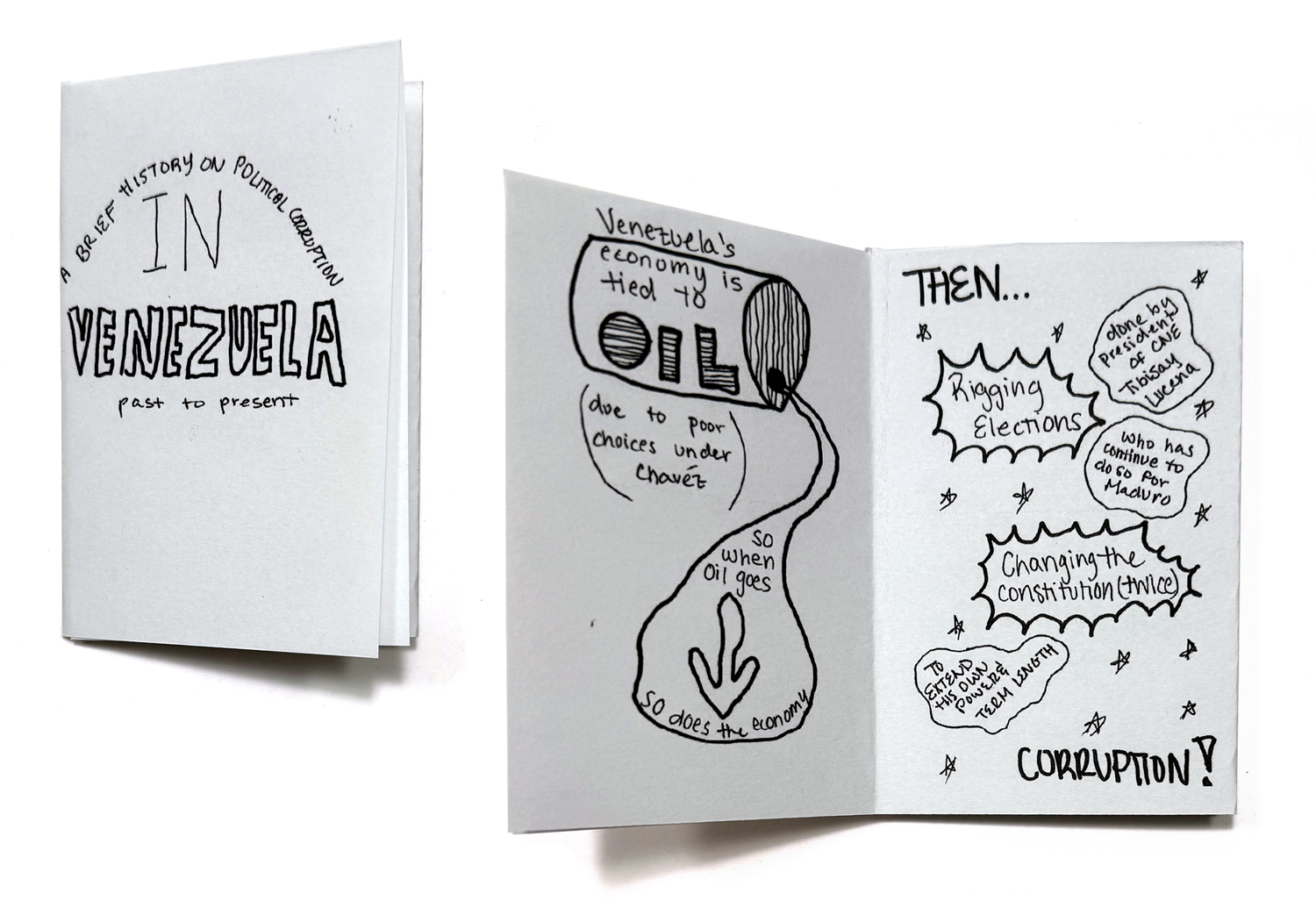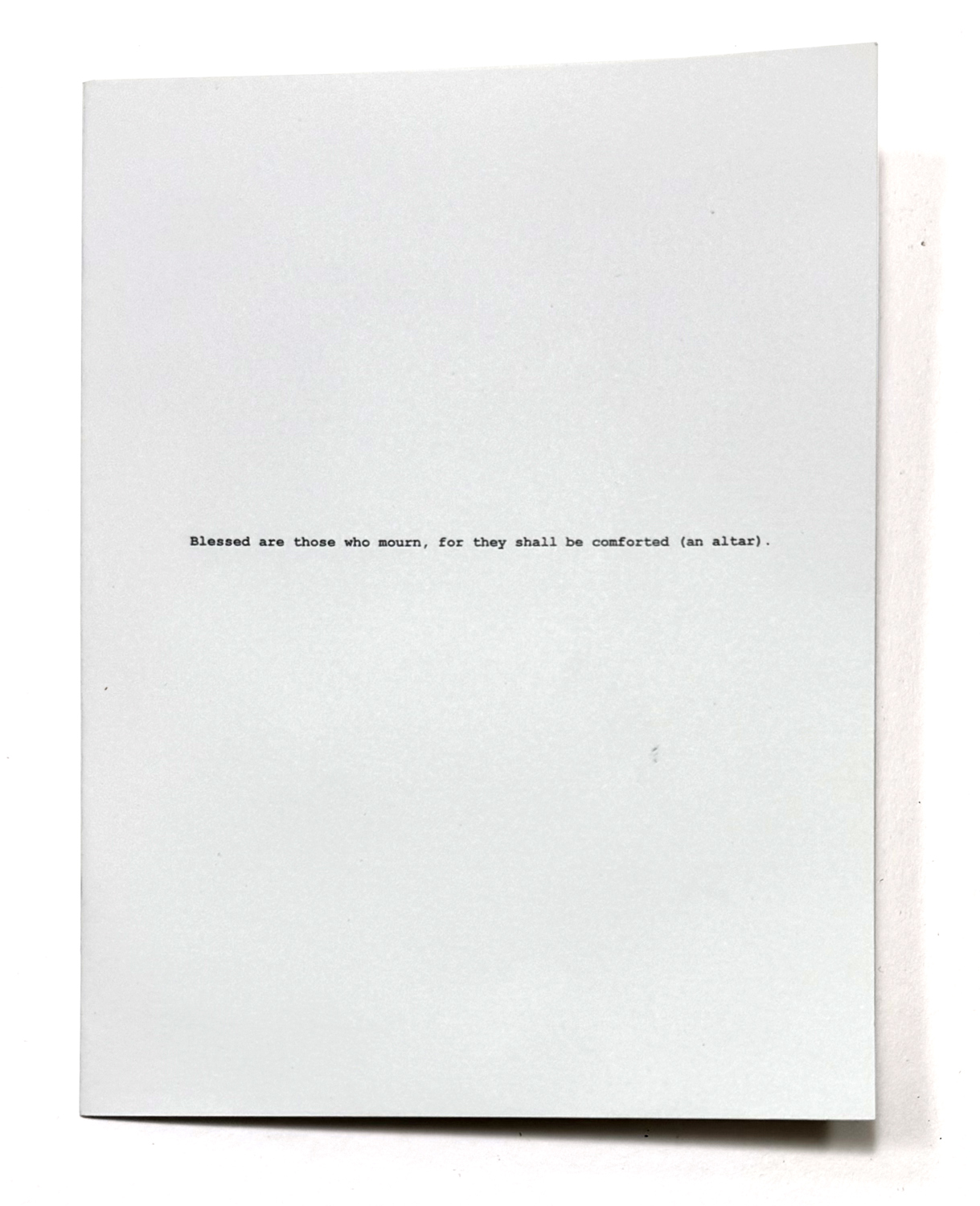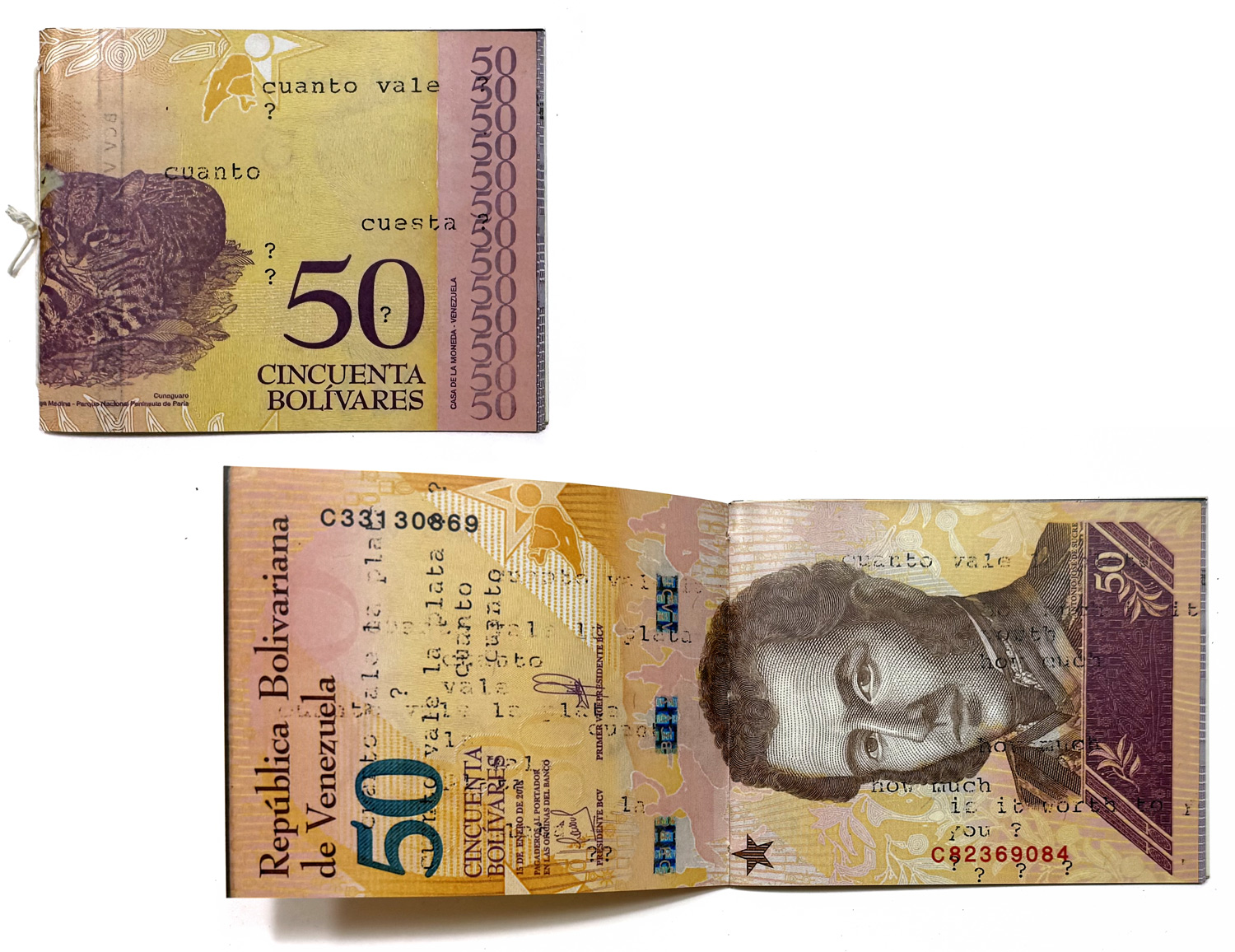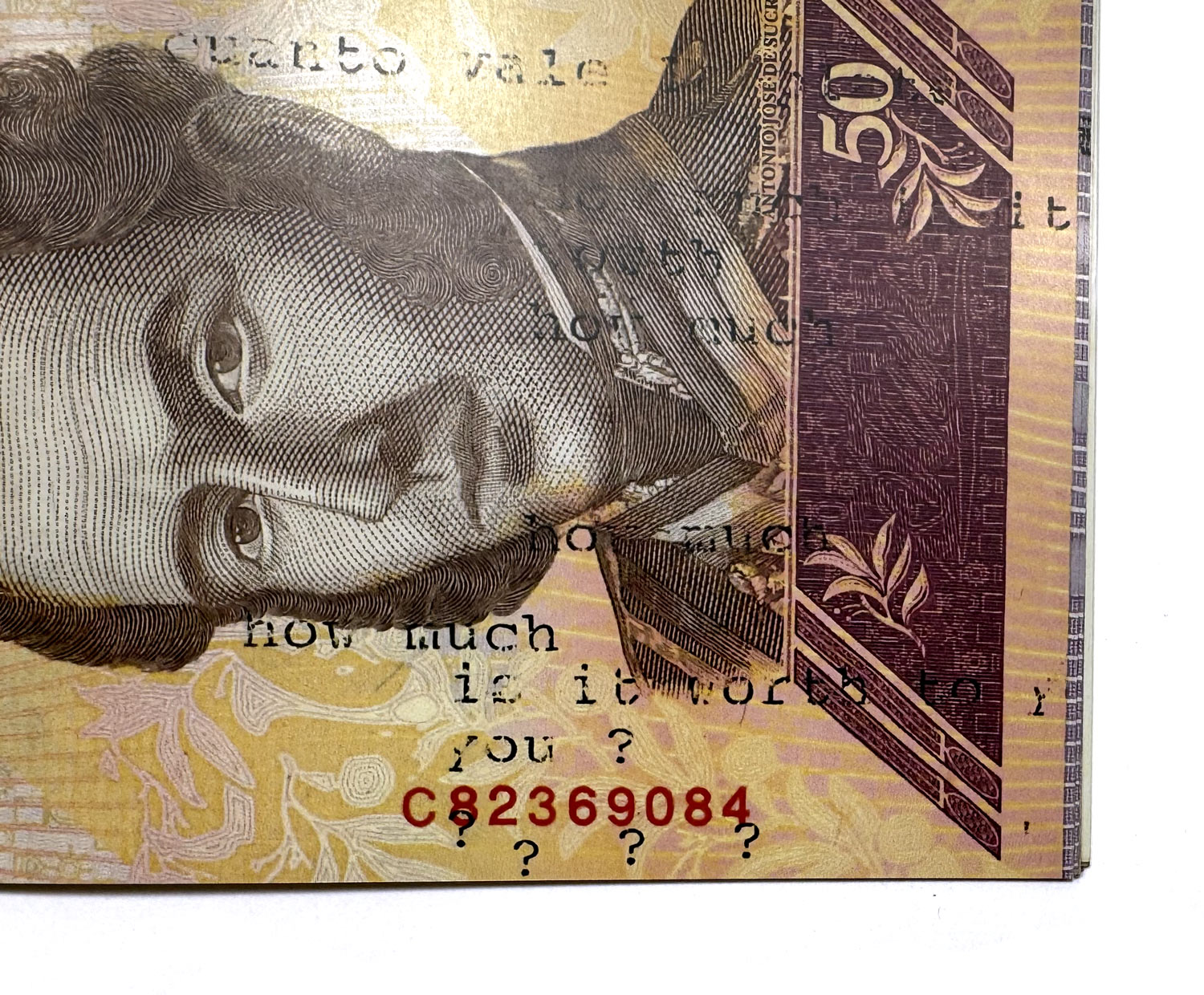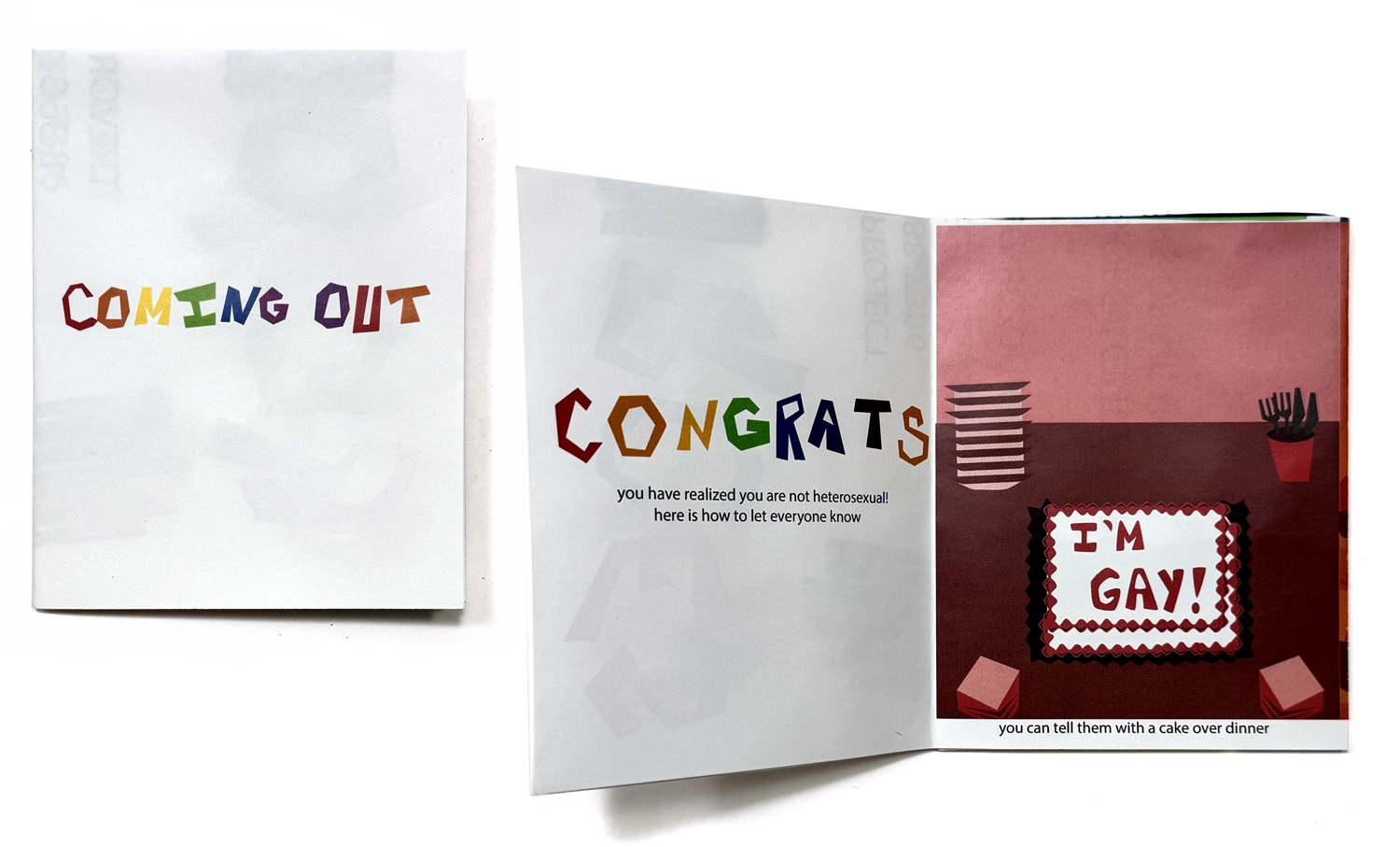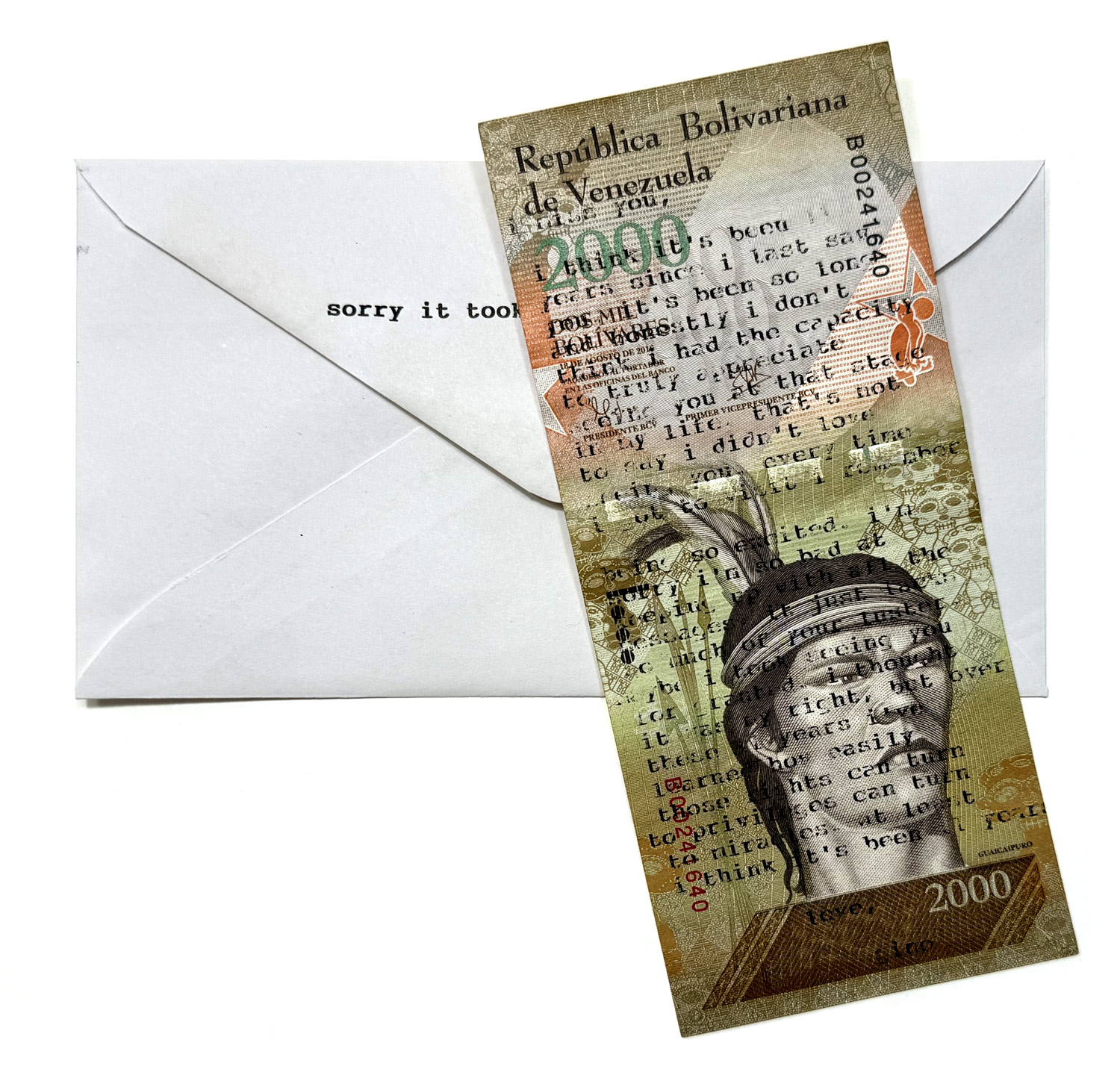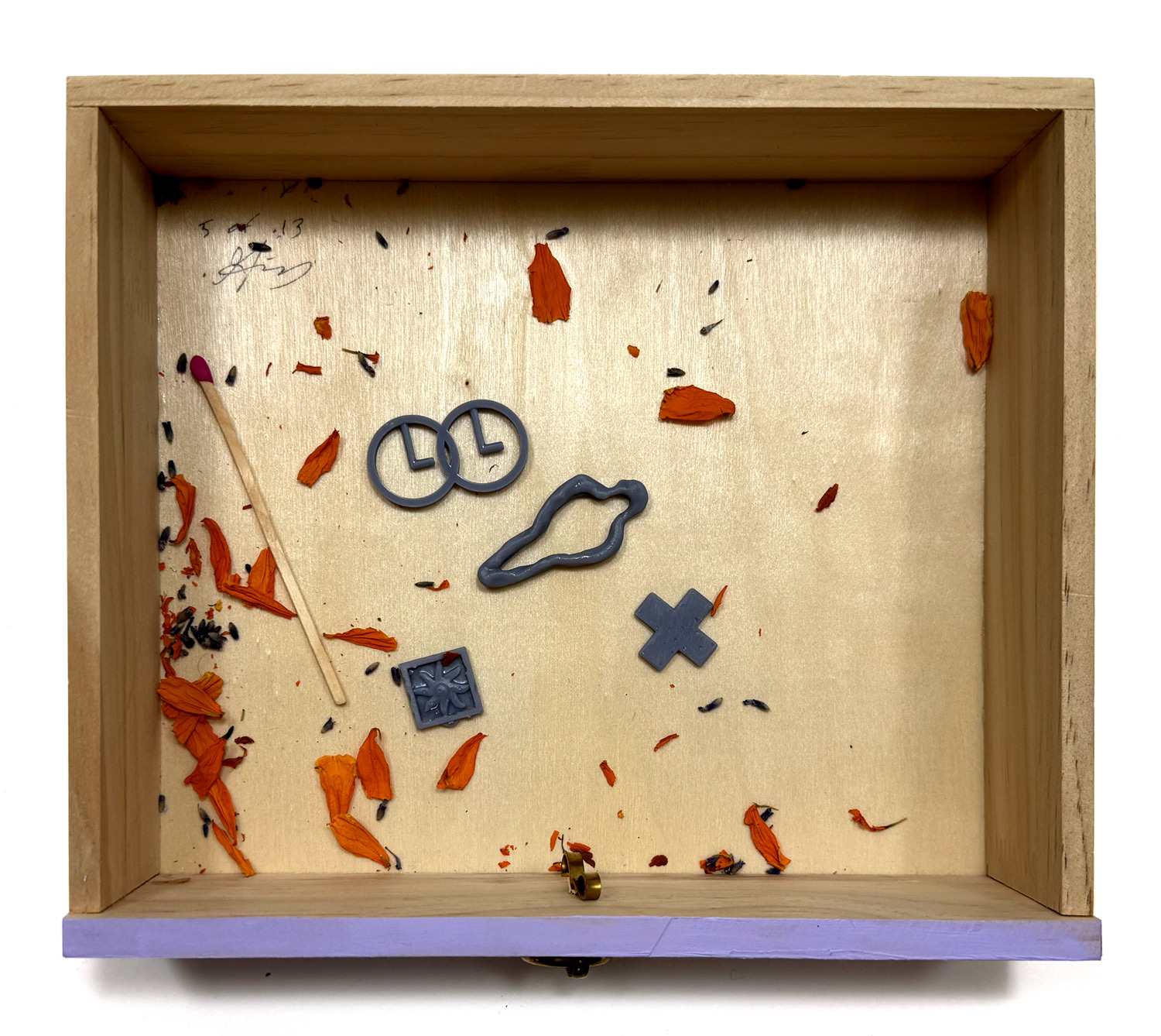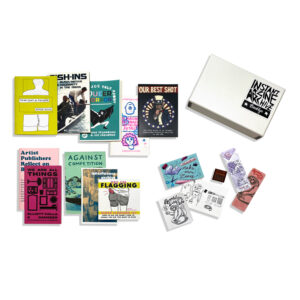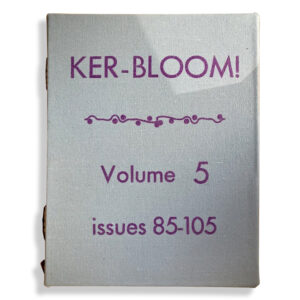Blessed are those who mourn, for they shall be comforted (an altar).
Blessed are those who mourn, for they shall be comforted (an altar).
Date
2024
Edition Size
12
Media
3D Printing, Currency, Laser Etching, Screenprint, Typewriter
Binding
Pamphlet, Single-sheet zine, Stapled
Dimensions
8 × 10 × 3 in
Location
New York, NY
Enclosure
Wooden Box
Collection
Box Sets, Collection Development, Uncategorized$ 1,800.00
5 in stock
View Collectors
Cornell University
Laguna College of Art + Design
Trinity College
Tufts University
University of Connecticut (UCONN)
University of Southern California (USC)
Wesleyan University
“As Queer people, we have often lived at the margins of society and have had to create our own culture and practices. Historically, Queer people have created space where there was none. During the 70s and 80s, we saw the proliferation of Queer culture, such as ballroom, Queer language, and even mourning rituals. I became particularly interested in Queer mourning rituals, as this suggested some kind of Queer practice or spirituality. Inspired by Ephemera as Evidence by José Esteban Muñoz, this current body of work incorporates aspects of Venezuelan spiritual practices with Queer archival and mourning practices to imagine what a Queer centered spiritual practice can look like. How can we as Queer people honor our ancestors? How can we petition them for guidance? What does Queer as practice look like?”
gino romero is a queer and trans Venezuelan-American from Miami, FL. Their work is primarily concerned with the decolonization of archives through community intervention and personal narrative using aspects of practices stemming from their Queer + Venezuelan background. They are most interested in ways history has been recorded off of the written page. They consider this a way to communicate with their ancestors and as part of their Queer ancestral veneration practice. Their work explores the Queer experience through a diasporic lens. Using aspects of rituals that are native to Venezuela in tandem with Queer practices, they create a personal syncretic religion. Oftentimes in archives, cultural materials are removed from all context, with this work, they create a living archive which is manifested through cultural languages of Queerness, historical ephemera, and spiritual practice.
[…]I have learned to pray with glitter
I have learned to pray with clocks
I have learned to pray with box fans
But what I think is most important
Is that prayers are not always made for me
But I can find my own way to pray
Contents:
1. I Couldn’t Afford Flowers so I Made These Instead II, 2024. 5 x 5 x 1.5 in. screenprint and typewriter on paper, candle, glue
This book is dedicated to my aunt and uncle who passed away during the ongoing humanitarian crisis in Venezuela. I was not able to attend their funerals due to the crisis, which has caused extreme inflation rendering the bills practically worthless. Since I could not afford to go, I created flowers using prints of the same bills that prevented me from being able to attend. In many spiritual practices, burning writing is a way to communicate with your ancestors. This work situates my familial experiences within a larger political context in order to show how the crisis affects individuals even in the diaspora.
2. i hope this letter gets to you (sorry it took so long to send), 2023. 3.625 x 6.5 in. typewriter on bolívar, envelope
It has been a long time since I have been able to visit Venezuela due to the crisis. Many of the people I used to visit have now passed. This work is a letter about memory, nostalgia, and mourning.
3. Stations of the Cross(dresser), 2019. 7 x 3.3125 in. screenprint on laser cut paper
A series of 15 prints paralleling the stations of the cross, a common catholic motif, to an exploration of gender. The stations depict the greatest suffering experienced by the son of God, done so that we may be saved from that pain. Ironically, people use these same texts in order to perpetuate homophobia. This work highlights that hypocrisy.
4. My First Will and Testament (hopefully not my last), 2023. 32.4 x 8.5 in. zine
The life expectancy for a Trans person of color is 35. As I get closer to that age, I can’t help but to think of my own mortality. Historically, Queer and Trans people have not had ownership over their own death rites. Families that once casted out their child will suddenly claim their body and hold funerals for them after passing with no awareness of the wishes of the deceased. In this work, I make it explicitly clear how I want my death rites to be handled, so that when my time comes, there is no debate.
5. Cuánto Vale? Cuánto Cuesta?, 2020. 4 x 4.8 in. zine
The title translates to “What is it worth? What is it cost?” As inflation rates go higher and higher, people in Venezuela continue to starve and lack adequate resources. What is this money worth if it can’t buy food? water? medicine?
6. Coming Out, 2017. 5.5 x 4.25 in. zine
Coming out tends to be more for the cisgender-heterosexual community than for individual. This piece is commentary on the concept of coming out by approaching a usually tense topic in a comedic and satirical way. In this zine, I explore coming out if it was for the person as opposed to their community. I also provide information/resources for Queer + Trans youth in order to acknowledge the very real ramifications that some people experience from coming out.
7. A Brief History on Political Corruption in Venezuela: Past to Present, 2018. 4.25 x 2.75 in. zine
From 2016-2018, the Venezuelan crisis was highly publicized in American media. There was a lot of misinformation spreading around and me and my fellow Venezuelan friend found ourselves educating a lot of people. We collaborated in order to make a short and easily digestible zine telling a summary on the corruption in Venezuela in order to save our breath.
8. Explaining They/Them Pronouns (It’s Really Not That Hard), 2018. 4.25 x 2.75 in. zine
A short and digestible zine addressing common questions/responses about nonbinary people and they/them pronouns.
9. Queer Coded Villains (a small and by no means comprehensive collection), 2022. 4.25 x 2.75 in. zine
We often see villains in tv shows have Queer tendencies. From effeminate devils to T4T duos, these villains are Queer for a reason! This zine gives a brief overview of the creation of this trope and examples of villains that fit it.
10. untitled (talismans), 2023. 3D prints
Across many spiritual practices, there is a tradition of throwing objects in order to divinate. In Latin America, shells, bones, and even sentimental items are used to predict your future. As part of my Queer Ancestral Veneration practice, I wanted to be able to receive guidance from my Queer ancestors and Trancestors. In collaboration with Bel Andrade, we created 4 talismans for Queer divination: 1. Clocks: felix gonzalez torres “untitled (perfect lovers)”, 2. Box Fan: John Boskovich “Feel it Motherfuckers: Only Unclaimed Item from the Stephen Earabino Estate”, 3. +/x: reference to the “+” in HIV+ and reference to the “x” as a gender neutral option in Spanish, 4. body outline: Ana Mendieta “Silueta” series
11. Blessed are those who mourn, for they shall be comforted (an altar), 2024. 8 x 10 x 3 in. Ready-made wooden box, paint, cempasúchil, lavender, matches
This box set is an altar for me. These books are part of my spiritual practice. They are letters to the dead, talismans for the future, research to connect with my ancestors. They are all part of my personal syncretic practice. I have found a lot of comfort within these books. I hope they may provide some comfort or some learning for you.

